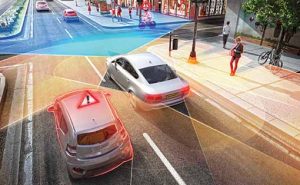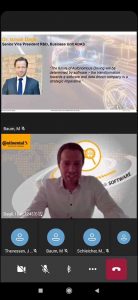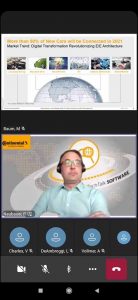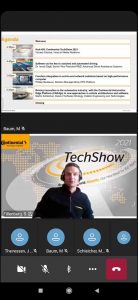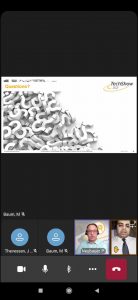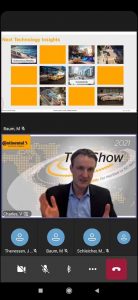On the sidelines of Auto Shanghai 2021, Continental Automotive held a virtual tech talk. Ashish Bhatia brings out all things automotive software touched upon in the session.
On the sidelines of Auto Shanghai 2021, Continental held a virtual tech talk under its new initiative, ‘The Continental Tech Show Around The World 2021’. Focussed on software, the session spanned the spectrum of software as a key to assisted and automated driving, function integration in the end-to-end network: from the sensor to the vehicle high-performance computer to the cloud. It also touched upon driving innovation in the automotive industry: with the Continental Automotive Edge Platform (CAEdge) to new approaches in the case of in-vehicle architectures and software. Averred Dr Ismail Dagli, Senior Vice President, R&D, Business Unit ADAS, “The future of autonomous driving will be determined by software the transformation towards software and the data-driven company is a strategic imperative.”
Dagli drew attention to Continental being a leading player in full-stack software. Consisting of assisted and or automated driving units, cameras, lidars and radars, Continental, claimed Dagli, delivered more than 100 million units between 2017 and 2019. With over 300 models, and 50 brands the company catered to 25 Original Equipment Manufacturers (OEMs). He cited the increasing content and complexity due to higher automation levels being tackled by the company’s portfolio for automated driving. Continental technology, according to Dagli, is classified into partly automated driving (SAE L2), L2 Plus made up of L2 performance and L2 premium, and highly automated driving (SAE L3). Under SAE L2, the company offers highway assisted rated NCAP 5. Under l2 performance, the company offers a traffic companion allowing drivers to ride hands free at speeds less than or equal to 80 kmph. In L2 premium, the highway companion is extended to speeds less than or equal to 130 kmph. It translates to L2 in extended “Operational Design Domain”.
Under SAE L3, a cruising chauffeur is on offer. While the AD High-performance computer is optional in SAE L2, it comes as a standard inclusion in SAE L2 (1 unit) and SAE L3 (2 units). SAE L1 comprises up to five radars which are extended to seven in SAE L2 and SAE L3. There are up to two cameras in SAE L1, and up to six in SAE L2. The camera count goes to nine in SAE L3. Only SAE L3 offers a minimum of two lidars. To sum it up, the content per vehicle in L2 performance is greater than 2X of SAE L2, 4X in L2 premium and 10X in SAE L3.
Speaking on radar fundamentals for ADAS and AD, Dagli drew attention to the capabilities of determining the precise distance and speed in real-time and helping to navigate in adverse weather conditions. The next radar generation from Continental ᠆ 4D Imaging Radar offers capabilities that include high resolution, image processing, high detection sensitivity, system availability, and measuring device. Drivers can look forward to enhanced inputs required to steer clear of underride elevated objects, non-overridable ground obstacles, road boundaries, debris and potholes, navigating complex and dense traffic, and recognition of landmarks. Deeming artificial intelligence as key for sensor fusion and sensor interpretation, Dagli gave a sense of detection, tracking and environment modelling to give a perspective on fusion and comprehensive environment modelling through the use of lidar, camera and radar. Emphasising Continental’s readiness for the future, the session led to the vital importance of data quality and efficient data management.
Continental is known to have collected approximate 100 terabytes of data each day through a global test fleet. Through the CAEdge platform and an on-premises supercomputer, the company has worked extensively on neural network development, synthetic data generation, and validation and simulation, he shared. Through an AI Competence Center, the company has also invested in the core development of AI tech and the rollout to product development teams. The company has successfully prepared for SOPs of modular and scaleable full-stack capabilities and high-performance computers. For the full stack capability that executes driving and parking functions, perception through the operating system and middle ware, software components are known to be sourced from subsidiaries like Electrobit and Argus besides other third-party entities. Through the high-performance computer, the company offers combinable surround view and assisted driving up to integrated automated driving and parking high-performance computers. On addressing the growing system complexity and the need to attain standardisation, explained Dagli, Continental is leveraging the strengths of simulation. “The independent layer of stacks are standardised on a priority basis especially where there is a need to introduce efficiencies,” he stated. On automotive grade memories outside of the embedded systems assuming significance, Dagli added, peak performance utilisations banking on the company’s cloud partnerships with partners like Amazon Web Services (AWS). With it, the storage and computational power has neared infinity, he quipped.
Philipp Neubauer, Solution Manager Body HPC Platform, Business Area VNI Central Engineering said, “Autonomous and intelligent mobility requires a revolution of vehicle electronics. New architectures go beyond the vehicle: from the sensor to the cloud.” “End-to-end network solutions are based on body high-performance computers for a reliable low-latency connectivity,” he opined. With a projection of more than 50 per cent of cars being connected in 2021, Neubauer spoke of digital transformation revolutionising the E/E architecture. He credited it for leading the way towards software-defined vehicles and addressing complexity and functional growth with the current approach reaching its limits. Going forward, it is expected that users will rely increasingly on smart IoT devices. Using fewer high-performance and zones, significant compute power with more processing cores will be made available. The architecture will read to a 50 per cent reduction of wires with functions defined by software.
The integration is made possible by a server-based vehicle architecture from the sensor to the cloud, explained
Neubauer. The sensor feeds the zone/IO Box which in turn feeds the HPC/server and is connected to the cloud by offering mobile online services. The Continental Cooperation Portal (CCP) works to facilitates automated software delivery and integration. System integration, as per Neubauer, will be a key competency for the future generation of vehicles. The CCP is claimed to offer a customisable collaboration environment for software projects. Automated software validation and integration are expected to increase quality and efficiency.
Martin Schleider, Head of Software Strategy, Holistic Engineering and Technologies drew attention to new business opportunities and prospects of collaboration. “End users can get new software functions and updates over the complete lifecycle of a car,” he mentioned. He called the CCP the basis of Continental accelerating software development and attaining safety, security and reliability. In the vehicle architecture, the focus is on decoupling hardware from software, converging domains through functional building blocks, improving time to market through agile development and digitising lifecycle management through update and upgrade, he explained. He called for the need for trust-based collaboration models. He laid special impetus on the software-defined vehicle needing a software partner through the vehicle lifecycle to tackle the needs like security and safety support, and maintenance through the middleware sitting between the hardware supplier and OEM. ACI


